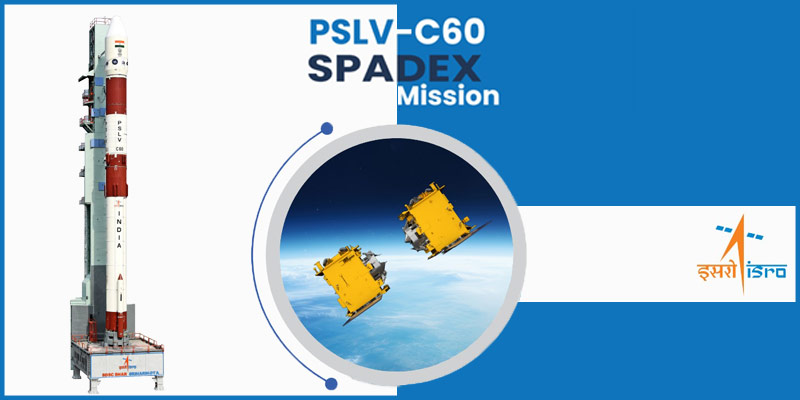- India
- Mar 28
- Sreesha V.M
ISRO performs rolling experiment of satellites under SpaDeX mission
• The Indian Space Research Organisation (ISRO) has achieved a significant milestone by successfully completing the rolling experiment as part of its Space Docking Experiment (SpaDeX) mission.
• This critical test involved the controlled rotation and circumnavigation of one satellite around another to verify precise maneuvering capabilities in space.
• The successful completion of this experiment marks an important step in India’s development of advanced space docking technology.
• According to ISRO chairman S. Somanath, the rolling experiment was designed to test the agency’s ability to bring spacecraft into proper alignment for docking from various orientations.
• The test provided valuable data on vertical docking feasibility and validated multiple control systems, including onboard software and ground station operations.
• These technological advancements are particularly crucial for future missions like Chandrayaan-4 and will support India's ambitions for more complex space operations.
• This achievement follows ISRO’s earlier success on March 13, 2025, when the space agency completed the undocking of two satellites as part of the same SpaDeX mission.
PSLV C60 SpaDeX mission
• The SpaDeX mission was launched on December 30, 2024 and placed two small satellites — SDX01 (Chaser) and SDX02 (Target) each weighing 220 kg — to demonstrate the docking experiment in space.
• On January 16, ISRO successfully performed the docking of satellites. With the successful docking of satellites, India became the fourth country after the US, Russia and China to accomplish the feat.
• The undocking of the satellites took place in a 460-km circular orbit with a 45-degree inclination.
• The satellites are now orbiting independently and their health is normal.
• With this, ISRO has now successfully demonstrated all capabilities required for rendezvous, docking and undocking operations in a circular orbit.
• Having accomplished this major milestone of undocking, further experiments with satellites are planned in the coming days.
• Exhaustive ground simulations and analysis were the cornerstone of achieving the undocking in the first attempt. Various tests replicating on-orbit conditions were meticulously planned and carried out in preparation for the earliest opportunity for undocking operations.
(The author is a trainer for Civil Services aspirants.)

